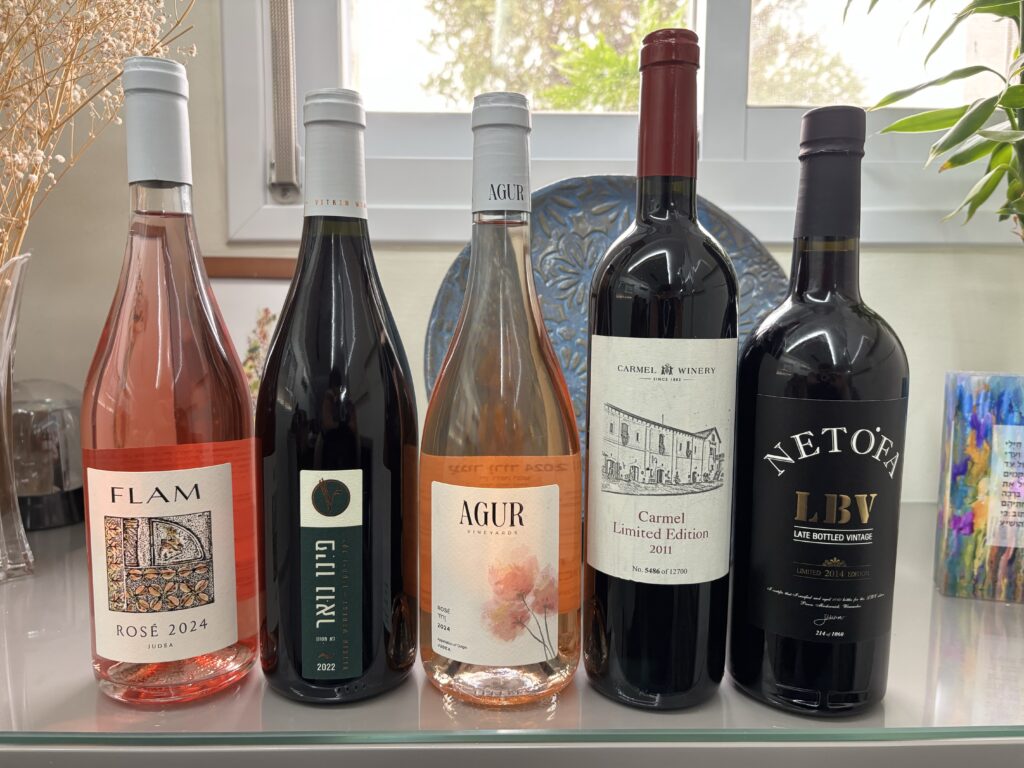
My work schedule simply does not allow me to ever catch up on wine writing! But time waits for no one – and here we are at Pesach, so I need to post my Seder picks for this year before finishing my series on Paris tastings. So be it.
Each year when thinking about the Seder wines, I try to come up with a list of wines that are both practical for each kos, while being appropriate for the mitzvah, in that they are truly excellent wines that deserve to adorn my Seder table. As I wrote last year, in general, I am NOT makpid on all of my wines being from Israel for the Seder, and most years I end up with a mix of wines from various places. But in the spirit of the season – Why is this year different from all other years? While part of the answer is obvious, as with the Haggadah, there are also deeper reasons why we should be supporting Israel now more than ever. First and foremost, the current situation here in Israel from October 7th onward has made farming in Israel VERY difficult across the board, of course, including vineyards. While things have started to improve with the ceasefire in the north, the wine industry here is simply crippled. Add to all of this the fact that the Israeli wine market was already suffering during the Corona years due to depressed sales to the restaurant sector. Add to that the tariffs that now have a potential to raise the cost of Israeli wine abroad even further, and we have a REAL problem here in Israel. And so I will be doing my part to support Israeli wineries, and I encourage my readers to do the same if at all possible.
The Seder itself presents a number of challenges in terms of drinking. First and foremost, all of the four cups are drunk for the most part without food. Two cups prior to the meal on an empty stomach no less and two cups after the meal when we are already full and the hour is late. My Seder night strategy has served me well each year, and so I see no reason to change it up. So here it is, along with my choices for this year’s seder.
[My only criteria besides the wines being from Israel is that I have enough on hand to provide all of my Seder attendees with the same wine (we are about 15-20 people this year and most of them will be drinking wines, so 2-3 bottles of each.]
1st Cup
The first cup is drunk on a relatively empty stomach; so come time for the Seder, I really can’t start with anything heavy at all. I always go for a rosé – light refreshing and not too austere:
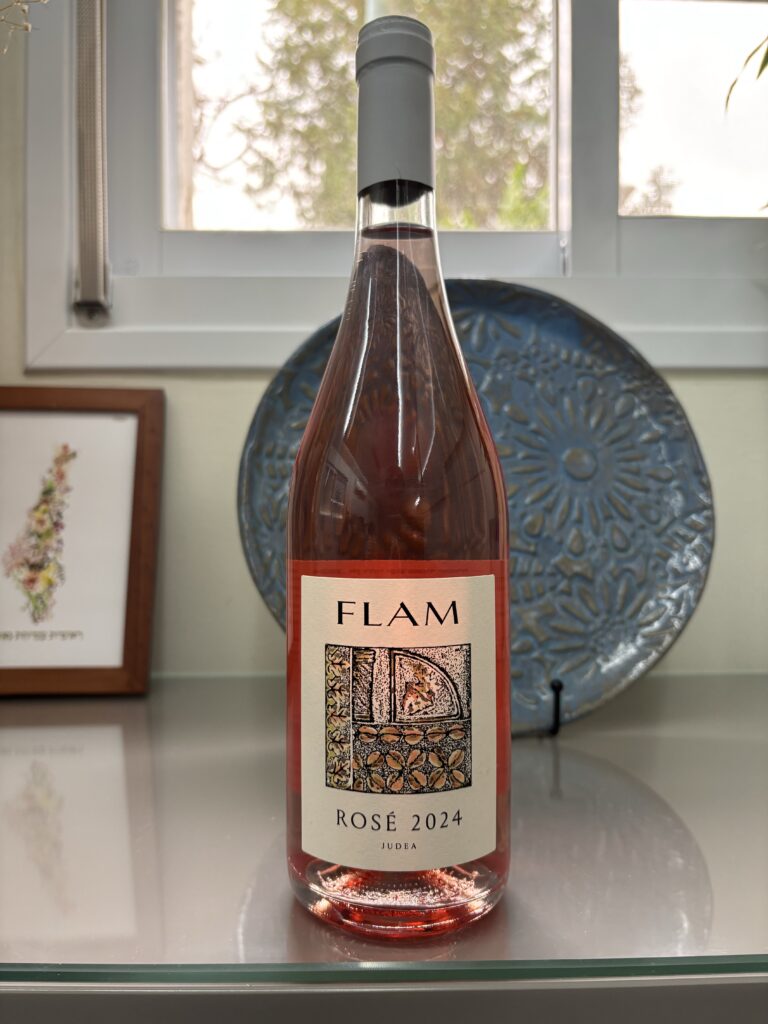
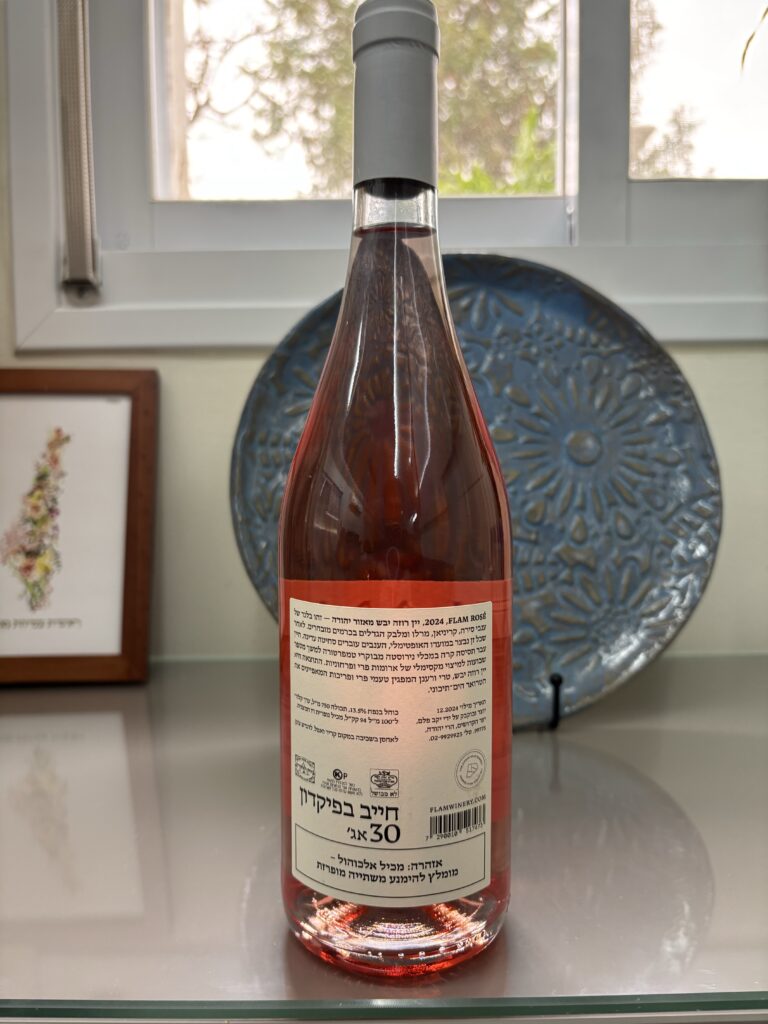
2024 Flam, Rosé – 13.5% abv – This year the wine is a blend of Syrah, Carignan, Merlot, and Malbec. It is exactly what I am looking for to start the Seder – light, refreshing, and fun. It is also my wife Michal’s favorite rosé year in and out (it keeps a remarkably consistent profile) and we pretty much always start with it for the first cup at the Seder. On the nose, you get some excellent strawberry, and some nice citrus. In the mouth, you get raspberry, strawberry, orange, and ruby red grapefruit, with some nice bright acidity, which gives the wine some pop. The finish is long and bright with some good slatey mineral thrown in, though just a touch. As I warn each year – I do believe that rosé tends to be more subjective than any other type of wine. Friends whose palates I trust implicitly sometimes have vastly different scores and rankings for rosés than I do. 91
2nd Cup
The second cup leads into the meal, and I often move to Pinot, which we can continue drinking with the poultry course:

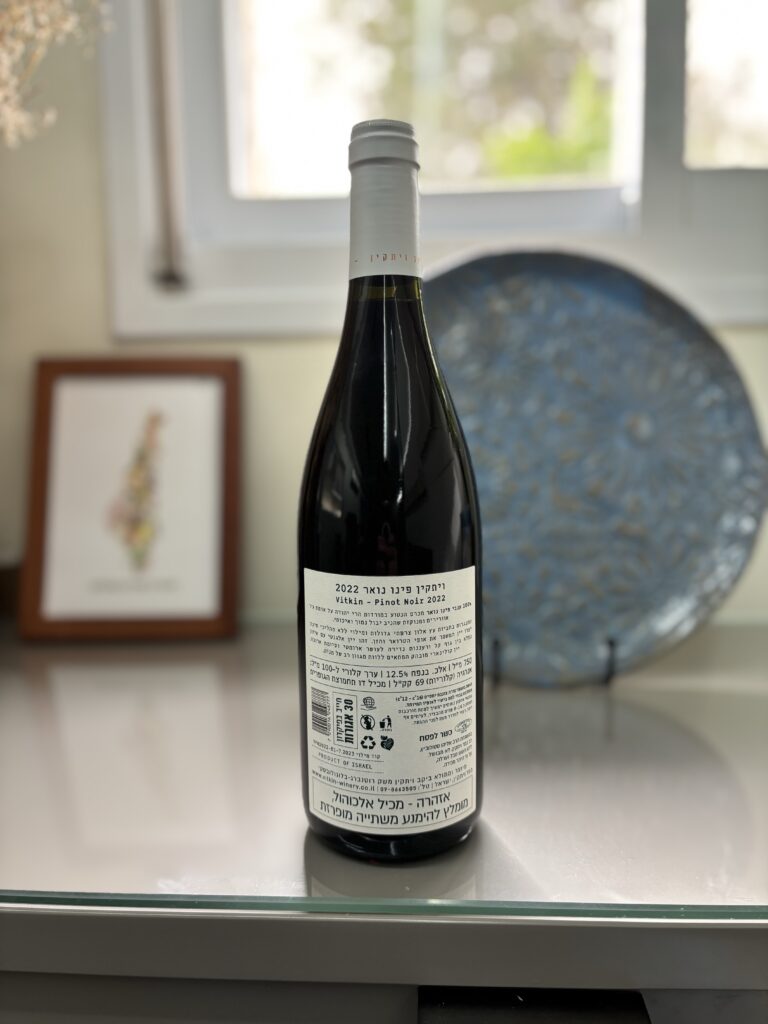
2022 Vitkin, Pinot Noir – 12.5% abv – Because 2022 was a shimta year, you end up having a bit of a discrepancy in availability between what is commonly found in the shops here in Israel and what is available abroad, as 2022 was not exported. Therefore, in most shops in Israel you will often find the 2022 Vitkin Pinot Noir on the shelves (though the ’23 is available at the winery), whereas in the US, 2023 is what you will get. The profiles are very similar, with the 2023 having a slight edge in terms of quality – (maybe a half point). What is nice is that the Vitkin Pinot Noir is consistently the most varietally true Israeli PN on the market. The nose is of red ripe fruit and some violet. The mouth on the ‘22 is less floral and more fruit driven with cherry, raspberry, and some nice earthy notes – while the ’23 has bit of that violet and lavender up front. The rest of the profile remains the same. In both cases the acid is nice with the ’22 having more integrated softer tannin while the ’23 has a bit more bite. The ’22 gets a 90 (and for those in the US the ’23 a 90.5).
The Meal
We do have a meat course, and really at the Seder you should be drinking a “Moshiach” wine, a wine that you would be willing to serve Moshiach himself, were he to show up and start the Geula at the Seder:
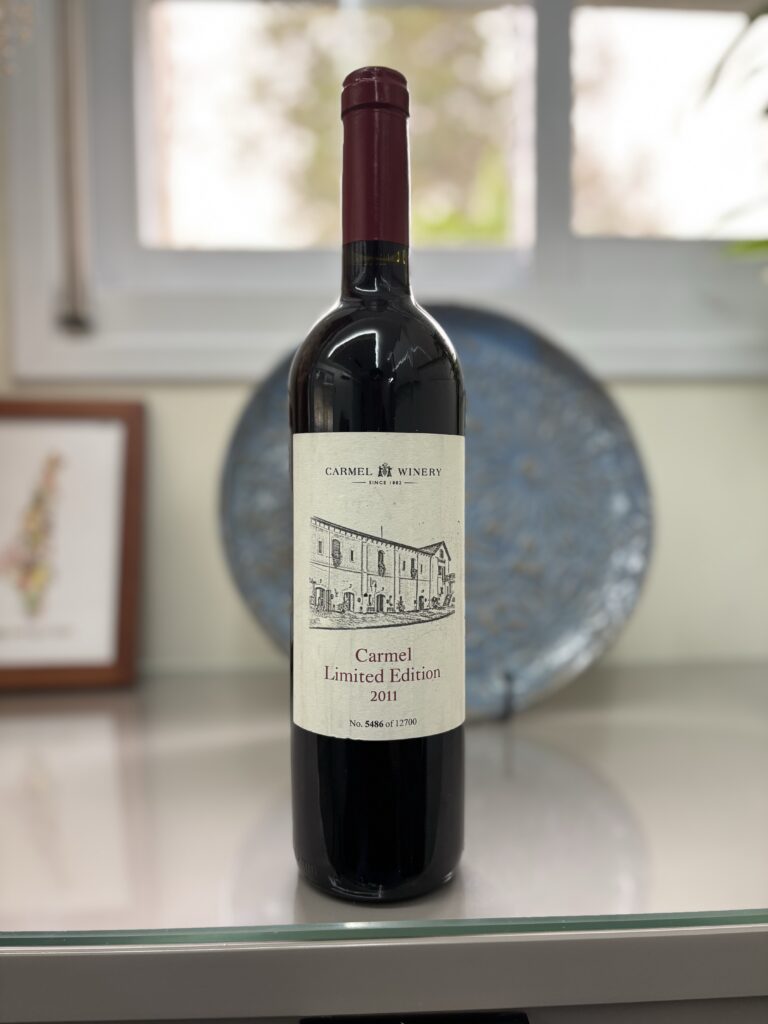
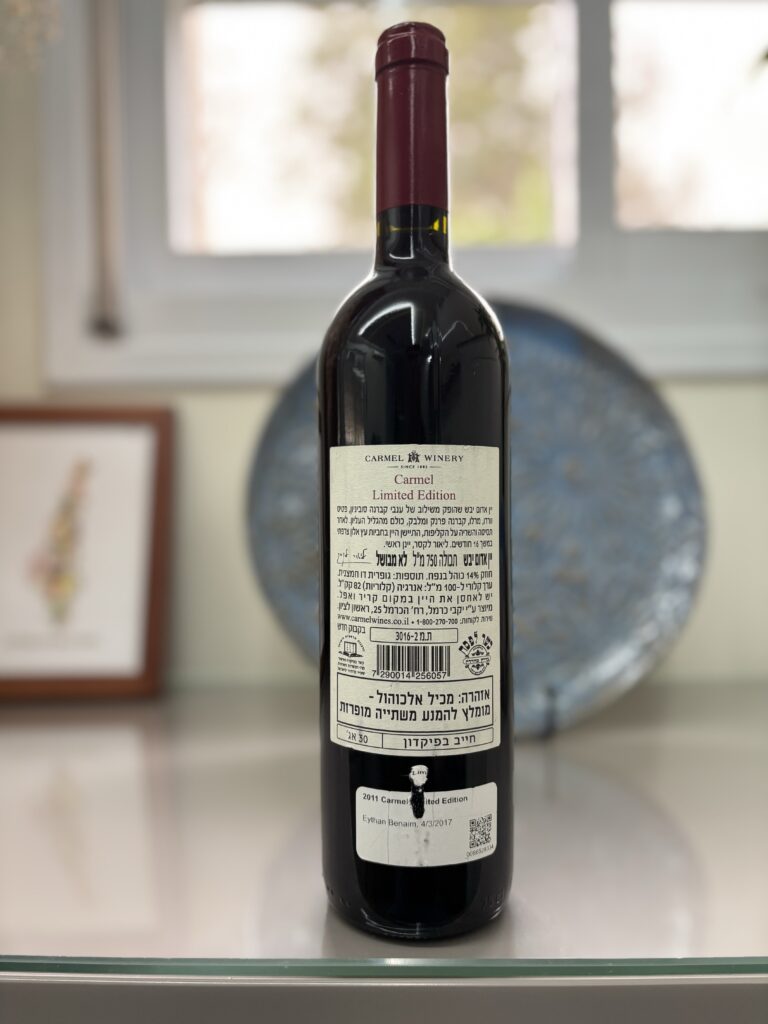
2011 Carmel, Limited Edition – 14% abv – It has been a while since I last had this wine, but based on previous notes, it should now be at peak. You get nice red and black fruit and toasted herb on the nose. In the mouth, the fruit has calmed down a bit, and while ripe, it feels balanced. We have ripe raspberry, blackberry, and plum, followed by sweet basil, some thyme, and sage, all balanced out by some really nice acidity. The finish is long with a mix of blackberry, raspberry, earth, and tobacco. Very nice indeed. 92.5
3rd Cup
This third come after a huge meal with much excellent food and wine, and so I move back to rosé here as sort of a palate cleanser:
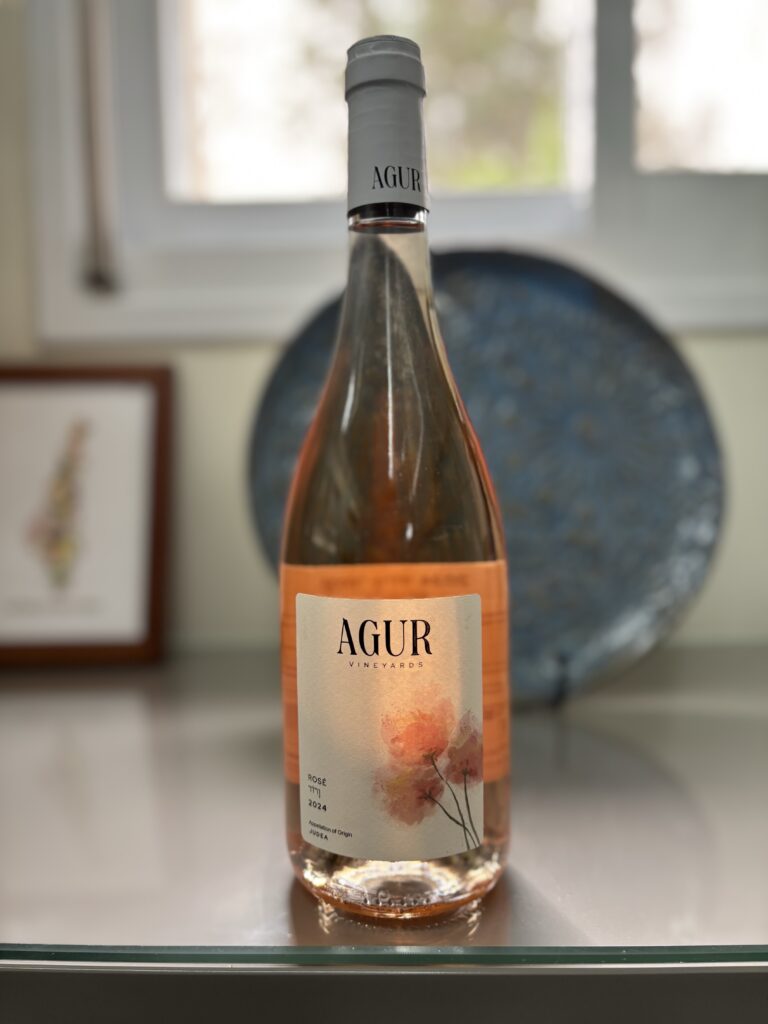
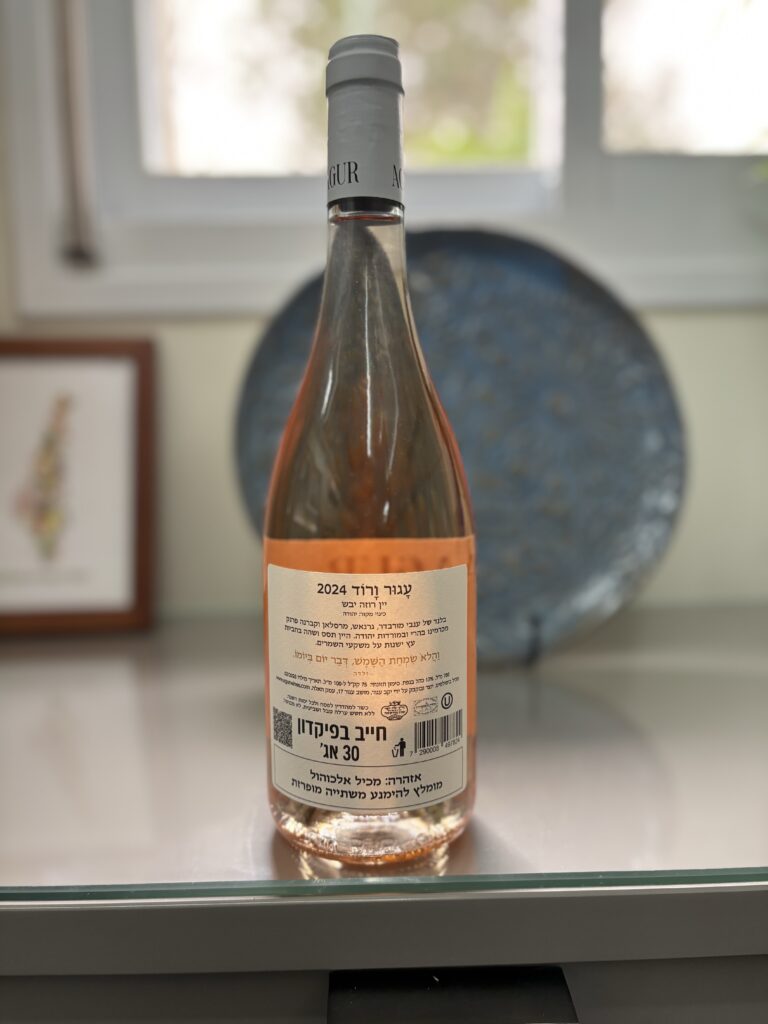
2024 Agur, Rosé – 13% abv – While Agur has been around for a while, it only now coming into its own – producing interesting wines in a consistent fashion each vintage. They deserve a write up and hopefully I will have the time for a visit soon. But on to the rosé. The wine is a blend of Mourvèdre, Grenache, Marselan, and Cabernet Franc. On the nose, you get strawberry and some rhubarb with hints of citrus in the background. In the mouth, the wine pops nicely with good acidity, with strawberry, lanolin, tangerine, lemon, and a bit of saline. It’s a wine that you want to keep on drinking (I tasted this wine at 8 am and midway through, decided to not spit and just enjoy it through the morning – really refreshing stuff!). Looking forward to introducing this one to people at the Seder! 91.5
4th Cup
The fourth cup is literally the last thing we consume as part of the Seder. And we do it after we finish the tefillot of Hallel and right before we start the singing in Nirtzah. As such I like to blast off into the stratosphere with the fourth cup, and finish off with a Port – or a port style wine – of excellent quality worthy of its spot as the closing wine of the holy Seder:
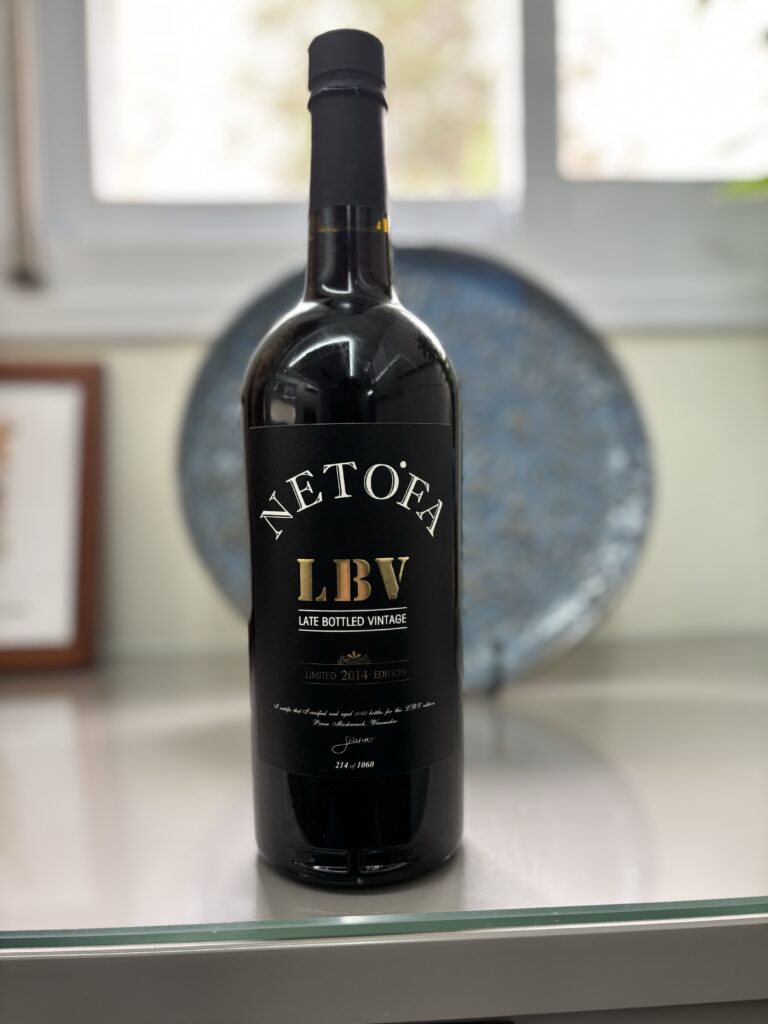
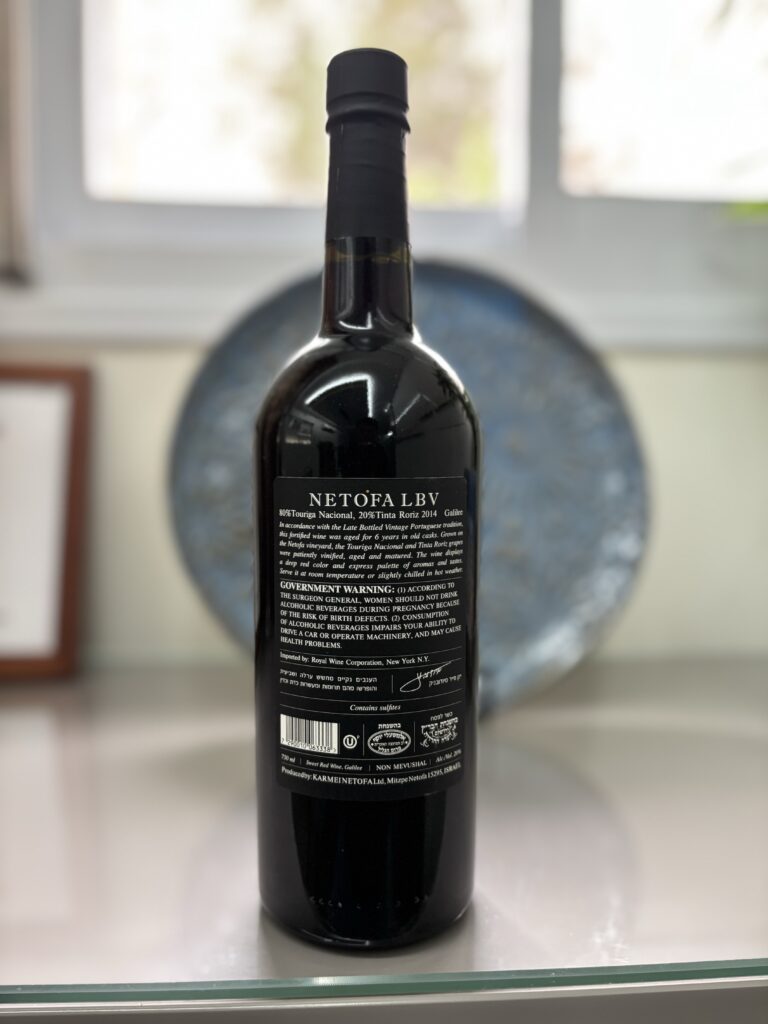
2014 Netofa, LBV – 20% abv – This I believe is the last LBV release for Netofa, as their port program is sort of in flux. It is a blend of 80% Touriga Nacional and 20% Tempranillo, sitting for about four years in oak, which has given incredible depth to this wine. The nose is deep with tons of red and black fruit, followed by rich notes of dried fruit and baking spice. In the mouth, the sensuous chocolate takes center stage, followed by the dried plum, fig, and cherry compote, all balanced out by the some really nice acid. The finish is long and rich with more chocolate, black fruit, and spice. What a way to end the Seder. 92+
Well, there you have it. May this truly be the holiday of freedom for ALL of Am Yisrael.
Chag Kasher V’Sameach.